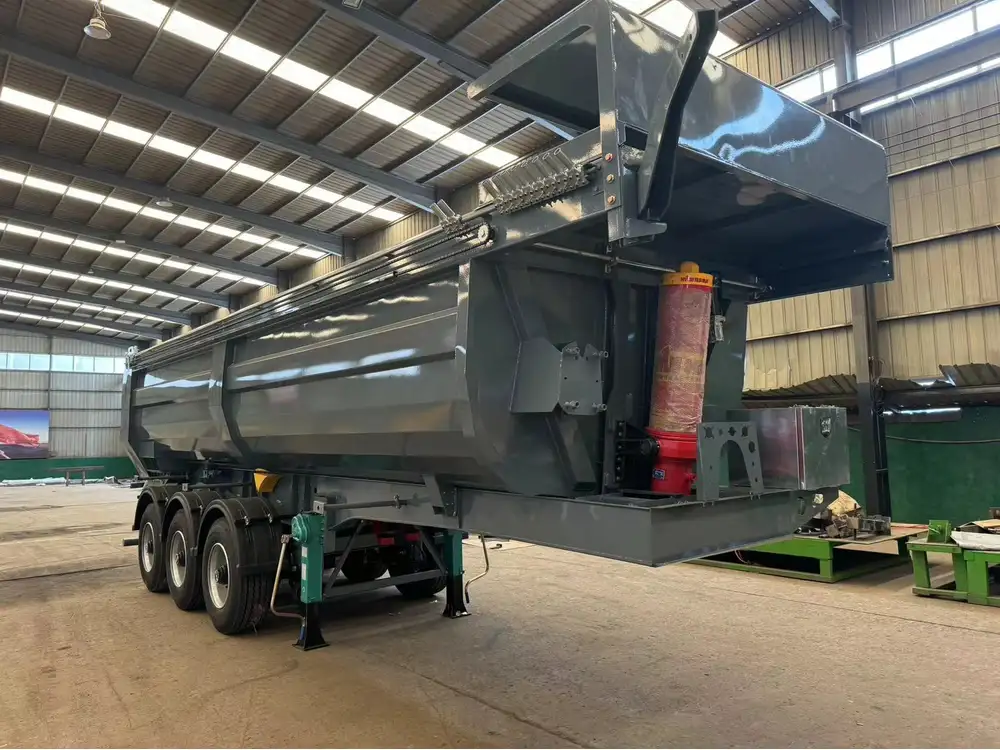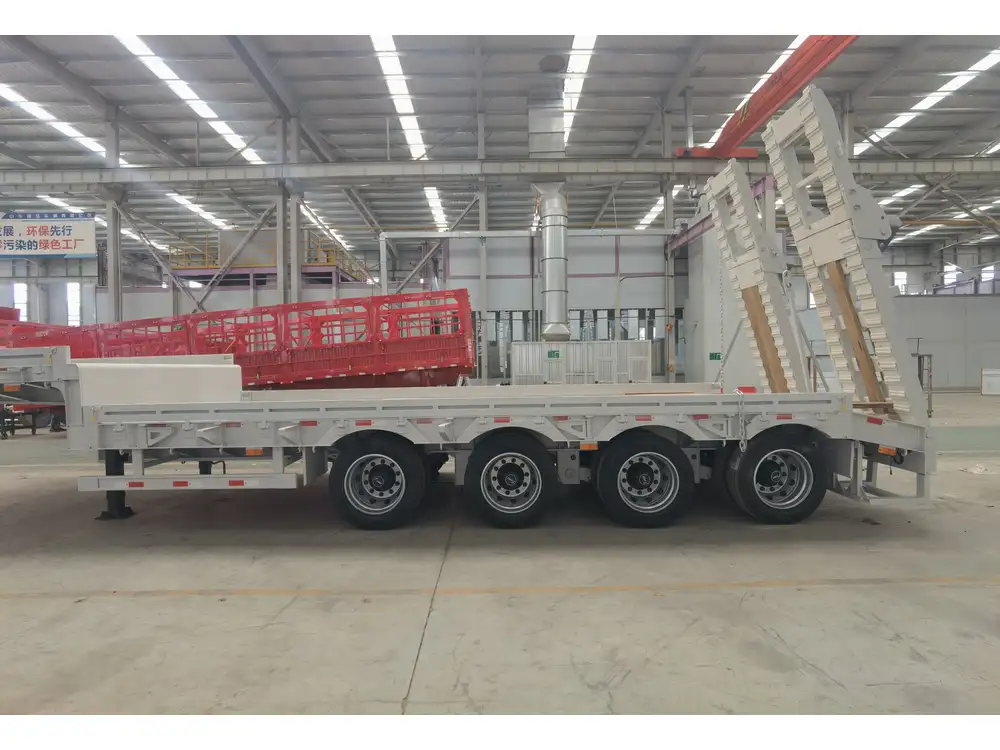When navigating the intricate world of transport logistics and freight handling, comprehending the specifications of vehicles utilized is paramount. One of the pivotal components of semi-trailers that often sparks inquiry is the height of their doors. Understanding this dimension not only facilitates better loading and unloading practices but also ensures compliance with industry regulations. In this detailed exploration, we will delve into the height of semi-trailer doors, the factors influencing their design, and practical implications for manufacturers, operators, and freight professionals.
Key Dimensions of Semi-Trailer Doors: A Comprehensive Overview
Semi-trailers come in various styles and specifications, reflecting their intended purpose. While heights can vary significantly based on the trailer’s design—whether for flatbeds, refrigerated units, or dry vans—certain standard measurements dominate the industry.
Standard Height of Semi-Trailer Doors
General Freight Trailers: Typically, the height of a standard semi-trailer door measures around 102 inches (8.5 feet). This measurement applies primarily to dry van trailers, which are commonly used for transporting non-perishable goods.
Refrigerated Trailers: Often, refrigerated trailers (also known as reefers) feature a similar door height, approximately 7 to 8 feet. This ensures sufficient clearance for palletized loads while maintaining thermal efficiency.
Flatbed Trailers: For flatbed trailers, the configuration may vary, but the door height can reach up to 60 inches (5 feet) in height. However, most transport operations involve the use of tarps or other covering methods rather than traditional doors.

Height Variability: Custom Solutions and Industry Standards
The diversity of loads transported necessitates varied door heights. Manufacturers often provide customization options allowing businesses to tailor semi-trailer dimensions according to their specific operational needs.
| Type of Trailer | Typical Door Height | Common Use Cases |
|---|---|---|
| Dry Van | 102 inches (8.5 feet) | General freight, retail goods |
| Refrigerated | 84-96 inches (7-8 feet) | Food transport, temperature-sensitive goods |
| Flatbed | Up to 60 inches (5 feet) | Construction materials, machinery transport |
Legislation and Compliance: The Importance of Adhering to Standards
Adherence to federal and state regulations is crucial for semi-trailer manufacturers. The Federal Motor Carrier Safety Administration (FMCSA) establishes size restrictions for commercial vehicles. Understanding these regulations contributes to the overall safety of freight movement and prevents potential legal complications.
Height Considerations for Loading and Unloading
When discussing the height of semi-trailer doors, it is essential to understand their implications on loading and unloading operations. Here are several crucial aspects that underscore the importance of door height:
Forklift Access: The primary factor influencing door height is the clearance required for forklifts or pallet jacks. A standard door height allows for the unimpeded movement of these tools.
Loading Dock Compatibility: Semi-trailer heights need to align with the height of loading docks to facilitate efficient loading and unloading processes. Docks typically range from 48 to 52 inches in height.
Vehicle Stability During Loading: An appropriately designed door height maintains the stability of the trailer during loading operations, reducing risks associated with top-loading scenarios.

Practical Applications: Real-World Implications of Semi-Trailer Door Heights
When selecting a semi-trailer, understanding the door height has real-world implications that can affect operational workflows significantly. Here are several key points to consider:
Enhanced Loading Efficiency
Utilizing a semi-trailer with an appropriate door height streamlines the logistics process. Operators can achieve faster loading and unloading cycles, significantly increasing productivity and reducing operational downtimes.
Impact on Freight Types
Not all products are suited for all trailer types. Products with unusual dimensions may necessitate the specific height and configuration of trailer doors. For example:
- Bulk Goods: These items, ranging from construction materials to palletized foods, often require consideration of door height for safe and efficient transport.
- Oversized Goods: Special accommodations need to be made for transporting oversize items. In this context, manufacturers might utilize custom-built trailers with taller or wider doors.

Safety Considerations
An appropriate trailer door height can enhance safety by ensuring that all loading equipment can operate efficiently without entailing the risk of collision or spills. Incorrect height may lead to damages, potential injuries, and delays which impact timelines and costs.
Predicting Costs
Cost structures can fluctuate based on the design of the trailer doors. Custom solutions tend to command a premium, while standardized models can be procured at lower costs. Here’s a brief comparison:
| Aspect | Standard Trailer | Custom-Built Trailer |
|---|---|---|
| Cost | Lower initial investment | Higher upfront costs |
| Time to Procure | Readily available | Extended lead times |
| Flexibility in Design | Limited customization | Tailored to specific needs |
Conclusion: Navigating the Landscape of Semi-Trailer Specifications
Understanding the height of semi-trailer doors is essential for manufacturers, freight operators, and logistics managers. It directly influences the efficiency of loading and unloading operations, compliance with industry regulations, and overall safety during transit. By embracing a comprehensive understanding of these specifications, stakeholders can optimize their logistics processes, reduce operational costs, and improve service quality for their clients.
Implementing customized solutions where necessary can result in improved operational excellence, reflecting directly on the end-customer experience. In the competitive market of freight transport, meticulous attention to detail—including the height of semi-trailer doors—can yield significant competitive advantages.

Final Thoughts: Questions to Ponder
As we conclude our exploration of semi-trailer door heights, we encourage operators to consider the following questions:
- What are the specific loading requirements for my freight?
- Do I frequently transport goods that vary in height, and how can this impact my efficiency?
- Am I compliant with the regulatory requirements regarding trailer sizes?
By addressing these questions, industry professionals can forge a path toward enhanced operational success, leveraging the full potential of semi-trailer specifications for optimal performance. Enhance your logistics operations today by understanding and adapting your semi-trailer choices.



